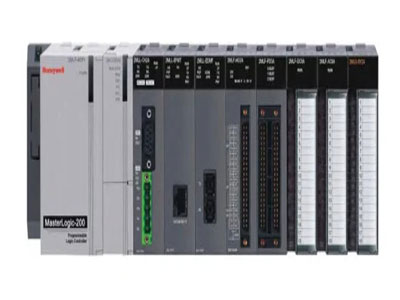Do Plcs Use AC Or DC?
Key Takeaway
PLCs can use both AC and DC power supplies, but they typically operate on DC voltage. A common setup involves converting AC line voltage (120 or 240 volts AC) to a lower DC voltage, often 24 volts DC, using a power supply unit. This DC voltage powers the PLC’s internal components and connected devices. Using DC voltage is preferred in PLC systems due to its stability and compatibility with various industrial components and sensors, ensuring reliable and efficient operation.
Power Requirements of PLCs
On Delay Timers play a vital role in industrial automation by introducing a time delay between the activation of an input signal and the energization of an output signal. These timers are instrumental in coordinating events, sequencing operations, and ensuring precise timing in various industrial processes. When an input signal triggers the timer, it initiates a countdown based on a preset time delay before activating the output signal. This delay allows for the orderly execution of tasks, enhances safety measures by preventing premature actions, and optimizes the efficiency of processes. On Delay Timers are widely utilized across industries in applications such as conveyor systems, motor control circuits, and manufacturing processes, where precise timing is critical for seamless operations. Their flexibility, reliability, and ease of integration make them indispensable components in industrial control systems, contributing to enhanced productivity and streamlined workflows.

Differences Between AC and DC PLCs
AC and DC PLCs are distinguished primarily by their power input requirements and internal circuitry. AC PLCs are designed to directly accept alternating current (AC) power from the mains supply, eliminating the need for an external power supply unit. This direct compatibility simplifies installation and reduces equipment costs, making AC PLCs a preferred choice in many applications. Conversely, DC PLCs require a separate DC power supply unit to convert AC power from the mains into the required direct current (DC) voltage. This additional component increases the complexity and cost of the system, but DC PLCs offer advantages in certain scenarios where specific voltage levels or power requirements are needed. Understanding the differences between AC and DC PLCs is crucial for selecting the most suitable option based on the application’s power supply infrastructure, voltage requirements, and environmental conditions. Whether it’s integrating with existing AC power systems or operating in DC-powered environments, choosing the right PLC type ensures optimal performance and compatibility with the overall control system.
Advantages of AC PLCs
AC PLCs offer significant advantages in industrial automation due to their compatibility with standard mains power supplies. This compatibility simplifies installation and eliminates the need for additional components like external power supply units, reducing overall system complexity. Engineers and technicians find AC PLCs particularly advantageous in environments where AC power is readily available, as they provide a convenient and straightforward solution for powering control systems. Moreover, AC PLCs often boast robust designs capable of withstanding the rigors of industrial environments, ensuring reliable operation even in harsh conditions. Their widespread use across various industries underscores their versatility and reliability in controlling and monitoring industrial processes. Additionally, the ease of integration with existing AC power infrastructure makes AC PLCs a practical choice for upgrading or expanding automation systems without significant modifications to the power supply setup. Overall, the advantages of AC PLCs contribute to enhanced efficiency, simplified maintenance, and cost-effective solutions in industrial automation applications.
Advantages of DC PLCs
DC PLCs offer distinct advantages, particularly in scenarios where DC power sources are preferred or where space constraints dictate the use of smaller power supplies. Unlike AC PLCs, which rely on mains power, DC PLCs can operate directly from DC power sources, providing greater flexibility in power input options. This feature makes them ideal for applications in mobile or remote installations where access to AC power may be limited or impractical. Additionally, DC PLCs are often preferred in environments where stability and consistency of power supply are crucial, as DC systems typically exhibit fewer fluctuations compared to AC systems. Moreover, the compact size of DC power supplies and PLCs makes them suitable for installations where space is at a premium, such as control panels in vehicles or compact machinery. Overall, the advantages of DC PLCs lie in their flexibility, stability, and suitability for diverse industrial applications, offering engineers practical solutions for powering and controlling automation systems.
Choosing the Right Power Supply for Your PLC
When it comes to choosing the right power supply for a PLC system, several factors should be taken into account to ensure optimal performance and reliability. Firstly, understanding the voltage requirements of the PLC is crucial, as using an incompatible voltage can damage the equipment or result in malfunctioning. Similarly, considering the current capacity of the power supply unit is essential to ensure it can meet the power demands of the PLC and any connected devices without overloading.
Moreover, environmental conditions must be taken into consideration, especially in industrial settings where factors like temperature fluctuations, humidity, and dust can impact the performance of both the PLC and the power supply unit. Selecting a power supply unit that can withstand these conditions is vital for maintaining consistent operation.
Furthermore, scalability should be considered, especially if future expansions or upgrades are anticipated. Choosing a power supply unit that can accommodate the growth of the PLC system ensures compatibility and avoids the need for frequent replacements or upgrades. Overall, by carefully evaluating these factors, engineers can choose the right power supply unit that ensures reliable and efficient operation of the PLC system in diverse industrial environments.
Conclusion
In conclusion, PLCs can operate using either AC or DC power sources, with each option offering unique advantages depending on the specific requirements of the application. By understanding the power requirements of PLCs and choosing the right power supply solution, engineers can ensure the reliable operation and optimal performance of industrial control systems. Whether opting for AC or DC PLCs, selecting the appropriate power supply is essential for powering the heart of automation systems efficiently and effectively.
